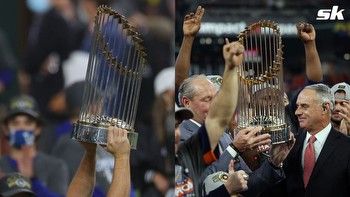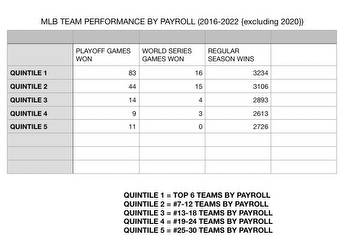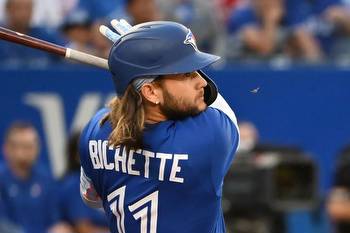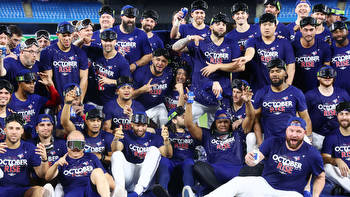STINSON: With relatively small signing, Toronto Blue Jays show intent to spend big
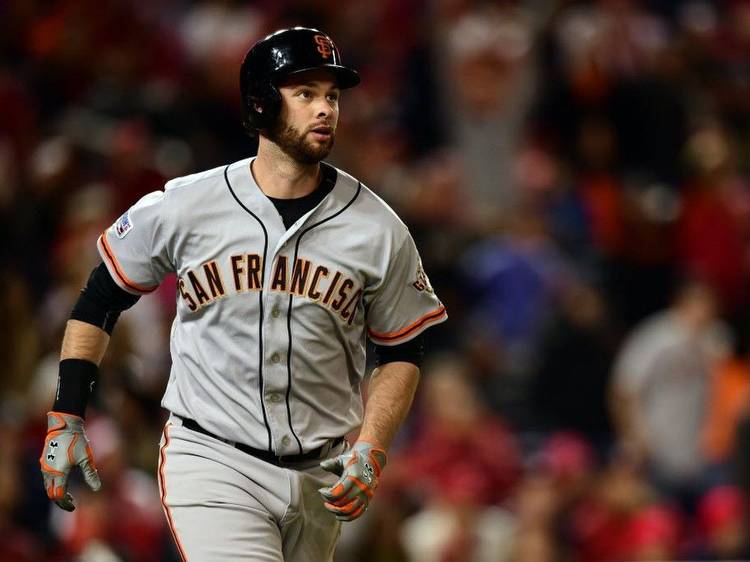
On its own, the Toronto Blue Jays signing a 34-year-old infielder to a one-year deal is not the kind of thing that will cause fans to wonder what brand of ski googles the players will wear in their Champagne-soaked clubhouse.
Don't have an account? Create Account
Brandon Belt? Nice hitter, when healthy. Strong beard. Excellent name with many headline-pun possibilities. But also a guy likely to back up the starters at a few positions. He’s probably not getting his own banner on the façade of the Rogers Centre.
And yet, Belt is a signal of the Jays’ intentions, proof that the statements from president Mark Shapiro and general manager Ross Atkins in recent months about the willingness to increase payroll into the upper Major League Baseball tier was not just a hypothetical. Executives can always talk about a desire to spend, but they can just as easily shake their heads sorrowfully weeks later and say the deals just weren’t there to be had.
But the Belt signing, and its reported US$9.3-million salary, while relatively small, is the kind of deal that a team being cautious about its payroll just doesn’t make. It’s the contractual equivalent of looking over the dessert menu, considering a couple options and then just ordering both. “You know what, I’ll go with the Kiermaier and the Belt, thanks.” (Note to headline writers: Jays Loosen Belt).
More specifically, that salary will push the Jays ever closer to MLB’s luxury-tax line, and most likely over it once the 2023 numbers are finalized for the dozen or so arbitration-eligible players on their roster. This is one of those things that has loomed over the franchise for years, at least since Shapiro arrived to replace Paul Beeston in 2015: Would the Jays ever be a luxury-tax team? Would Rogers Communications, with an eye to those relentless shareholders, ever countenance such free-spending ways? Would the franchise be operated like the big-market team it is, or like one of the many other MLB outposts that treats the phrase “market value” like “zombie apocalypse.” Something to be avoided at all costs, you see.
Some background is perhaps required here.
Baseball does not have a hard salary cap. But for years now, that sentence has always been accompanied by a theatrical wink and an elbow nudge. Teams have treated the luxury tax, the Competitive Balance Tax, as though it was a hard ceiling. Only 10 teams have exceeded it in the past two decades, and just three — the New York Yankees, Los Angeles Dodgers and Boston Red Sox — have done so with any regularity. Even those teams have been careful to drop back below it and avoid escalating taxes for repeat offenders. More recently, the Sox have acted as though the CBT line was an electrified fence, losing Mookie Betts and then Xander Bogaerts rather than risk a modest tax bill. It’s been a salary cap in all but name.
It certainly has been that for the Jays, who avoided spending into it even in the rollicking days of bat flips and parrot walks, of Russ Martin and Josh Donaldson and R.A. Dickey. Those teams were a little old and creaky, and as such didn’t have anyone with a long-term mega-contract of the type that really swells the payroll. They still don’t, but they are heading that way with Vladimir Guerrero, Jr., and Bo Bichette, which is why adding someone like Belt at this point of the off-season is interesting.
After the additions of starting pitcher Chris Bassitt, and outfielders Kiermaier and Daulton Varsho, the front office might have been expected to down tools and try to bring the payroll in just under the CBT line. That’s unlikely now, absent further moves, suggesting the Jays (and Rogers shareholders) will being paying tax penalties for multiple consecutive years — the dreaded escalating tax. Put another way, you probably aren’t taking one-year fliers on Kiermaier and Belt in 2023, and getting a tax bill in the process, only to try to go cheap on foundational pieces like Guerrero and Bichette in the coming seasons. Sudden Belt Tightening would be weird. (Sorry.)
Notably, this all comes as MLB’s traditional spending habits have been knocked a-kilter in recent years
Notably, this all comes as MLB’s traditional spending habits have been knocked a-kilter in recent years. The Yankees and Dodgers are still spraying money around with a firehose, but the Phillies aren’t far behind and the even the small-market San Diego Padres are handing out mega-deals like lollipops. Above them all, in their own category, are the New York Mets, who under new(ish) billionaire owner Steve Cohen are blasting past the CBT’s increasing thresholds like a runaway snowplow. Depending on stalled signing of free-agent infielder Carlos Correa, the Mets could end up with a tax-bill alone — again, just the tax — of US$150-million, or about three Oaklands. Maybe one Oakland and one Tampa Bay, after it all shakes out.
Against that backdrop, teams can either compete with the free spenders or groan about them to the media. There has been no lack of anonymous Cohen-related complaints in recent weeks, but the Jays seem intent on trying to battle for a World Series in this new environment. As they should, obviously. The biggest spenders have no guarantee of title success, as evidenced by the one championship between the Dodgers and Yankees combined over the past decade. But a contender, in a big market, shouldn’t be worrying about saving a few dollars around the margins.
On the evidence of this winter, the Blue Jays aren’t worrying about such things at all.
Postmedia News
sports section for the latest news and analysis. Care for a wager? Head to our sports betting section for news and odds.


